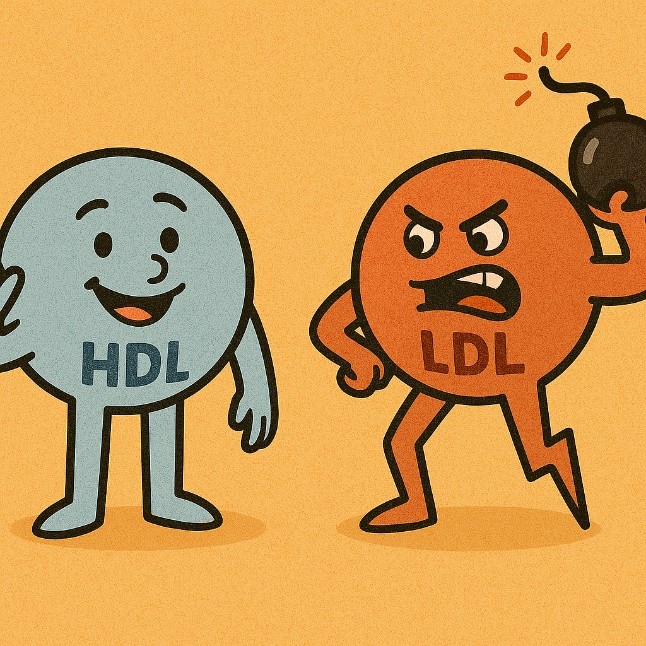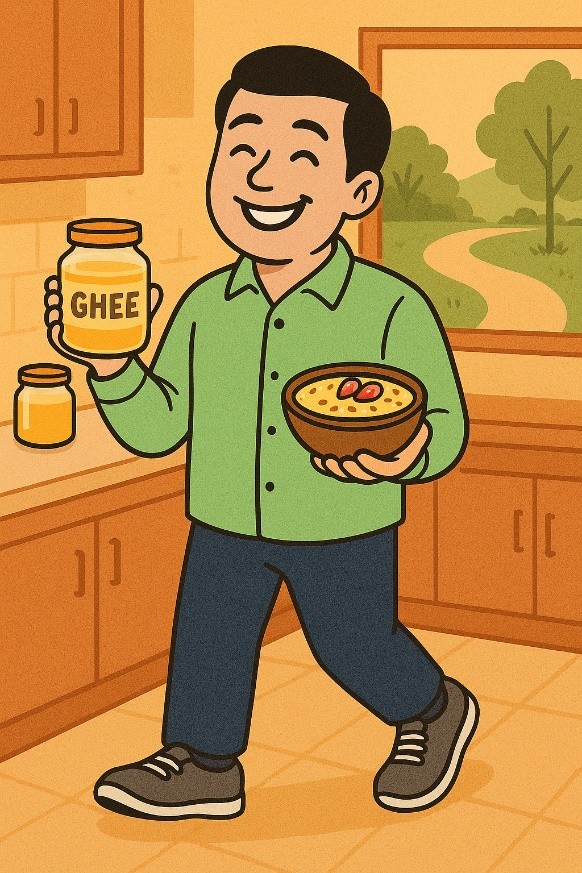When Anuj, a 42-year-old sales executive, got his blood work done during his company’s annual health check-up, one word in bold gave him a mini panic attack: “Cholesterol: High.”
Panic set in. Visions of clogged arteries, heart attacks, and lifelong medication flashed before his eyes. The next day, he skipped ghee, cut out all fats, and declared war on eggs.
But was that the right move?
Let’s pause Anuj’s story here and dig deeper into what cholesterol actually is. Because like Anuj, millions of us have misunderstood this waxy substance that’s quietly doing a whole lot better than we give it credit for.
So, What Exactly Is Cholesterol?
Cholesterol is a fat-like substance found in every cell of your body. It’s essential for:
- Building healthy cell membranes
- Making hormones like estrogen, testosterone, and cortisol
- Producing vitamin D
- Aiding digestion through bile production
Simply put: Cholesterol is not evil. It’s essential.
The trouble begins when it’s out of balance.
The 2 Types You Need to Know

To understand cholesterol better, imagine two delivery vans:
HDL (High-Density Lipoprotein): The “Good Guy” – Picks up excess cholesterol from your bloodstream and takes it to the liver for disposal.
LDL (Low-Density Lipoprotein): The “Trouble-Maker (when in excess)” – Carries cholesterol to your tissues, but too much of it can deposit in arteries and cause blockages.
It’s not about having cholesterol.
It’s about having the right ratio between HDL and LDL.
📊 The Stats That Matter
According to the World Health Organization (WHO):
- Raised cholesterol is estimated to cause 2.6 million deaths (4.5% of total) globally each year.
- More than 39% of adults worldwide have raised total cholesterol levels.
In India as per ICMR & WHO India:
- An estimated 25-30% of Indians in urban areas have high cholesterol.
- Alarmingly, high LDL levels are now being seen in younger age groups (30–45 years), driven by sedentary lifestyle, processed food, and chronic stress.
Common Misconceptions (Let’s Bust a Few!)
- “All fats are bad.”
Nope! Healthy fats (like nuts, seeds, avocados, ghee in moderation) actually help raise HDL cholesterol.
- “I’m slim, so I can’t have cholesterol issues.”
Thin outside doesn’t mean healthy inside. Visceral fat around organs can affect cholesterol too.
- “If it runs in my family, it’s unavoidable.”
Genetics play a role, yes, but lifestyle has the louder voice. You’re not powerless.
🥦 How to Be Cholesterol-Smart: 6 Simple Steps
Here’s what Anuj wished he had done instead of cutting out ghee overnight:
1. Don’t Fear Fat — Choose the Right Ones
Use:
- Cold-pressed oils (mustard, coconut, olive)
- Ghee (in moderation)
- Nuts and seeds (flaxseeds, chia, walnuts)
Avoid:
- Trans fats (in processed foods, bakery items)
- Excessive fried food
2. Add More Fiber
Fiber acts like a sponge and soaks up excess cholesterol.
- Include: Oats, legumes, fruits (apple, guava), and veggies
3. Move More, Sit Less
Exercise increases HDL (good cholesterol). Even 30 minutes of brisk walking 5x a week helps.
4. Don’t Skip Regular Blood Checks
You can’t fix what you don’t know.
Get tested at least once a year if you're 30+.
5. Reduce Refined Sugar and White Carbs
These convert to fat in the liver, impacting cholesterol. Swap white rice with millets, biscuits with fruits.
6. Manage Stress and Sleep
Chronic stress can raise cortisol, indirectly affecting cholesterol levels.
Prioritize deep sleep and mindful unwinding — it’s not just fluff; it’s biochemistry.
Back to Anuj…
After some reading, a visit to a nutritionist, and a few weeks of consistent changes, Anuj saw a shift — not just in his lipid profile, but in his energy, clarity, and confidence.
He brought back ghee, discovered the joy of millet porridge, and started walking after dinner.
What changed?
Not just his cholesterol — but his understanding.

Final Thought
Cholesterol isn't the enemy.
Misinformation is.
Know your numbers, understand what they mean, and act with clarity — not fear.
Because when you work with your body (not against it), amazing things happen.

